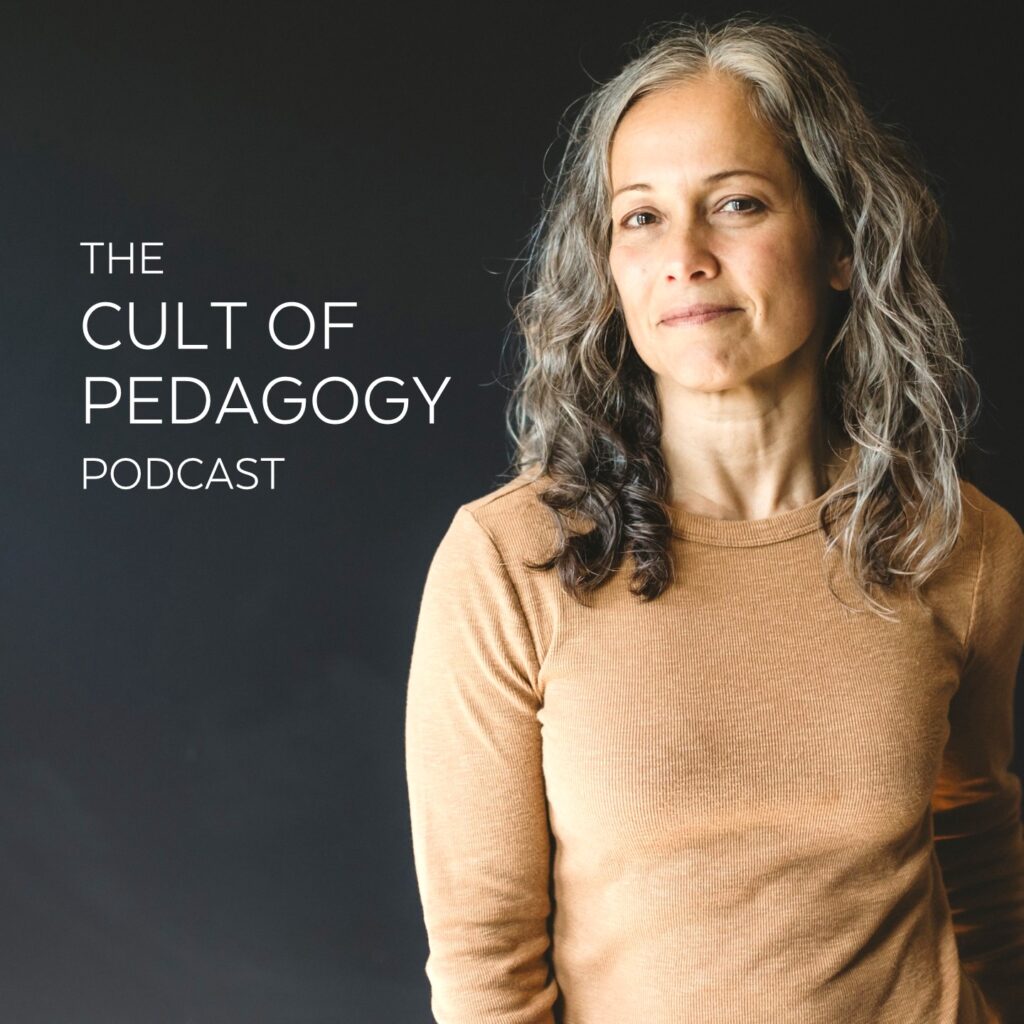
I get asked all the time about how I started this blog, what tools I use, where my illustrations come from, how I make my videos, how I actually earn an income from the site, and so on. So here’s an overview of how all the parts fit together. This page is my best attempt to explain how we got here. I figured out all of this over time, by talking with other people doing similar work, listening to lots of podcasts about online business, and watching lots of YouTube tutorials.
Some of the links in this post are affiliate links, which means Cult of Pedagogy will get a commission for referring you to the products and services mentioned.
The Website
In 2013 started my blog on WordPress.com, which is an easy way to create a blog without any fancy bells and whistles: On WordPress.com, you can’t add plug-ins, which allow you to add all kinds of functionality to your website. You also can’t generate any income from advertising. I wanted the bells and whistles, so I moved my site to WordPress.org. This video from WPBeginner explains this in more detail:
Here’s the thing about WordPress.org: You have to find a host. A host is a company that stores your website and delivers it to anyone who tries to access it online. This requires storage space and bandwidth. When you use WordPress.com, they take care of the hosting for you. It’s nice. But if you want a WordPress.org site, you need to get your own host. I used a company called BlueHost to host my site for many years, and recently I switched to a company called WP Engine.
The Illustrations
When I wrote one of my earliest posts about the Fisheye Syndrome, I was looking for a great stock photo to use for my site. I found a gorgeous one, then realized it was going to cost me about $75 to use it. That totally wasn’t going to happen. So I decided to start drawing my own illustrations. But I couldn’t afford high-level illustration software. I just used the MS Paint software that came free with my laptop and drew my own pictures that way. This tutorial shows you the basics of how MS Paint works:
If you are on a Mac, I’ve heard that Paintbrush is a similar tool.
I saved these illustrations as a PNG files, which at some point I learned was a good file type for online illustrations. I don’t remember where I learned it, but this article explains the difference between PNG, GIF, and JPG files. I used that image as the featured image for the post, then I put the image inside a blank PowerPoint file (in portrait orientation), put a colored rectangle behind it that’s the same color as the background image in my illustration, add a few text boxes for the title of the post, and I then use that as the main image in the post. I do this large, portrait-oriented image to make it easier for people to pin my post on Pinterest.
At the end of 2017, I discovered The Noun Project, a massive library of icons you can download for anything you want; you just have to pay an annual license fee. I started using these most of the time instead of hand-drawn illustrations, mostly to save time.
The Podcast

Recording
I record my podcast using free software called Audacity and for years I used an inexpensive microphone that plugged right into the USB port of my computer: It was called a Samson GoMic and it worked great; a perfect mic to get started! More recently, I have upgraded to an Audio-Technica ATR2100-USB microphone (similar to this one), which is also a USB mic. I ordered this very inexpensive windscreen to cover it; this does a great job of filtering out the “popping” sound you get from “p” sounds.
Interviews
When I do interviews, I used to do them over Skype and I recorded them with a software called Call Recorder for Skype. I had to do these calls on a Mac, because I knew the software and was too lazy to move to something else, but there is a software called Pamela that records Skype calls for PCs. When the interview was recorded, I downloaded the MP3 recording of it, then imported it into Audacity.
More recently, I have started using an app called ZenCastr*. This gives me outstanding file quality because it records each person on a separate track; this allows me to get the volume and sound quality more uniform between all parts of the conversation.
[*I am an affiliate for ZenCastr. Cult of Pedagogy receives compensation for any sales that come from this link.]
Editing
I edit every podcast in Audacity, then export it as a WAV file. Next, I convert the WAV file to an MP3. This can be done with something like Zamzar file converter.
File Hosting
To have a syndicated podcast, you have to have a podcast hosting service. (It’s kind of mind-boggling how many different hosts you need to do this stuff!) I use a podcast hosting service called Libsyn. I upload the podcast to Libsyn, and they make sure it goes to places like Apple Podcasts and Spotify, where people can find it to listen.
For a more complete overview of how podcasting works, check out Pat Flynn’s free tutorial, How to Start a Podcast. I learned a lot from it.
The Videos
I set up my YouTube channel just a few months after starting my blog. People have asked what kind of animation software I use to create the cartoon-y animated sequences in many my videos: It’s PowerPoint. Using the illustrations I create in MS Paint, I animate them using PowerPoint’s animation tools. To put it all together, I just play the slideshow on my computer, narrate it with the microphone I use for podcasting, and record it using screencasting software called Camtasia Studio. I can also edit the recordings in Camtasia and export them as MP4 video files, which then get uploaded to my YouTube channel.
How Did I Grow My Audience?
There are lots of ways to build and grow an audience. For me, I started by just sharing posts with friends and family. Then I did a few guest posts for larger platforms that brought more people to my site, like this one for Edutopia and this one for MiddleWeb.
I also established an email list pretty early on through a platform called Aweber.* Anyone who has a successful online business or website will tell you that a mailing list is one of the most effective ways to develop a long-term relationship with an audience, even more so than through social media. This post offers a great overview of the hows and whys of email list-building.
[*I am an affiliate for Aweber. Cult of Pedagogy receives compensation for any sales that come from this link.]
How Do I Support Myself with my Website?
My income is generated from a few different sources. Again, ALL of these methods were learned over time and have changed as the years have gone by.
Speaking and Professional Development
I offer in-person and virtual keynotes, workshops, and other kinds of professional development. This page summarizes these services.
Podcast Sponsorships
I run a few short, paid ads for education-related companies on every episode of my podcast. If you are interested in advertising, please use our contact form to reach out to us and see if we’re a good fit.
Products and Courses
I create digital products for sale on Teachers Pay Teachers, which has been of my main sources of income. (If you are interested in becoming a seller, use this link to tell them I sent you and I will receive a bonus for referring you!) You can see all of my TPT products here.
I also have two online courses: JumpStart, a technology course, and a mini-course, Four Laws of Learning. I’m actively building more courses as well!
Affiliate Marketing
I earn a small commission for recommending other people’s products, courses, and services. When someone clicks on one of my affiliate links for these items and makes a purchase, Cult of Pedagogy receives a percentage of that sale. Most of the books I review here have affiliate links to Bookshop.org. I also have affiliate partnerships with the course creators listed on this page.
Book Sales
In 2015, I co-authored a book with Mark Barnes called Hacking Education: 10 Quick Fixes for Every School. A few times a year, I receive royalty payments from the sale of this book.
